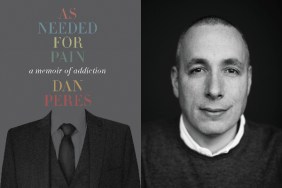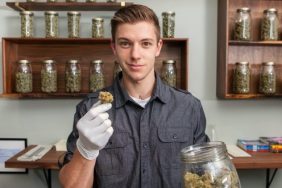The music world has been reeling in the six weeks since Prince was found dead in the elevator of his Paisley Park studio compound outside of Minneapolis. “Fentanyl toxicity” is listed as the cause of death in documents released by the Midwest Medical Examiner’s Office on Thursday
A law enforcement official on Thursday further confirmed to the Associated Press that based on autopsy tests, Prince died of an opioid overdose. This confirms the growing suspicions of many, piecing the puzzle together after drug dealer allegations, doctor visit histories, emergency hospital visits and beyond. Prince had reportedly made a last-ditch attempt to check into a treatment facility before he died, but was unable to get an appointment in time.
As outlined in my piece last year on the death of Wayne Static, another celebrity casualty of opioid addiction, we incarcerate millions for a harmless plant with voluminous evidence of medical benefits while a culture of Xanax and Oxy poppers is taking firm hold in America, wreaking absolute havoc among communities suckered into a haze of cognitive dissonance.
The pill with a staggeringly scary list of dangerous side effects is supposedly safe, because your doctor prescribed it and the pharmaceutical industry has fine-tuned the art of marketing to your most vulnerable instincts – you’ve undoubtedly seen the charming ads promising a better life through adorable animations and beautiful women strolling through sunflower fields. Meanwhile, a plant with thousands of medical benefits, industrial uses and eons of safe use among civilization is labeled a horrible threat to personal and public safety. But on what grounds?
With a widespread proven track record, Xanax and Oxycodone/Oxycontin make junkies out of people who would never buy from a street dealer. And depending on where you live, the industry may be actively preying upon this fact: of all the oxycodone prescribed in America in the first half of 2010, 98% was dispensed in Florida. According to the state medical examiner’s office, an average of 7 Floridians die from prescription drug overdoses every day — more than from car accidents.
Providers wrote 259 million prescriptions for painkillers in 2012. Medicare agreed to cover nearly 27 million Schedule 2 prescriptions.
On the explosion of “pill mills” in America, Medical Practice Insider notes that the public “demand and cost on the prescription painkiller front allows for pill mills to gestate — but it’s the legalities and underfunded digital resources that allow for them to thrive.”
“Certain legislation, like Tennessee’s Intractable Pain Treatment Act, has been accused of establishing a realm where pill mills can flourish,” the article continues. “Put into effect in 2001, the Tennessee measure was meant to make drugs, like the newly developed oxycodone, more accessible to patients with cancer and intractable pain. What the act ended up facilitating was an “explosion in use” of prescription painkillers in locales like Sullivan County (which saw 11 pain clinics emerge to meet the demand), according to District Attorney General Barry Staubus.”
The bottom line: Popping pills is dangerous, far more dangerous than a brand name and doctor’s approval suggest. Prince’s body was suffering from the kicks, splits, leaps and general abuse he’d put it through in three decades of performance, and his reliance on pain medication took a far greater hold than he likely ever anticipated.
A social standard built upon institutional authority and misinformation will consistently encourage the wrong choices – as we see in the rise of self-medicating and recreational Pfizer Culture. Until this changes, we’re going to lose a great many more beautiful people to the darkness.
Photo: Kevin Winter/Getty Images








